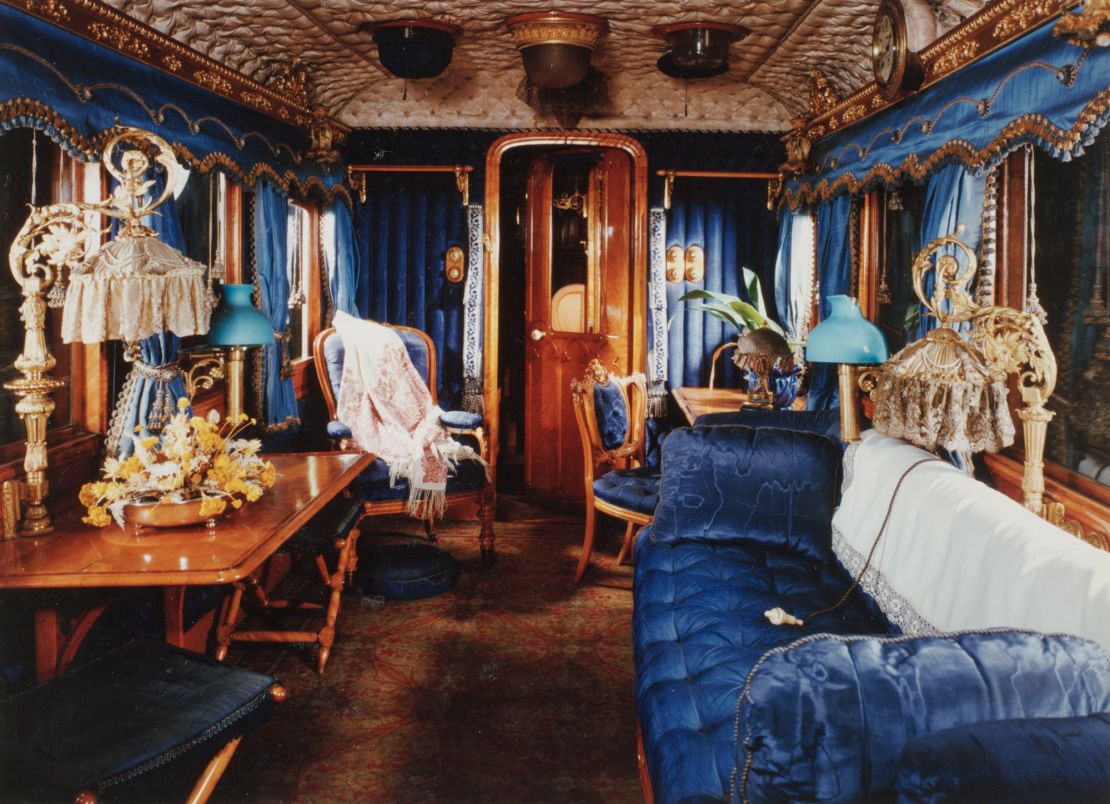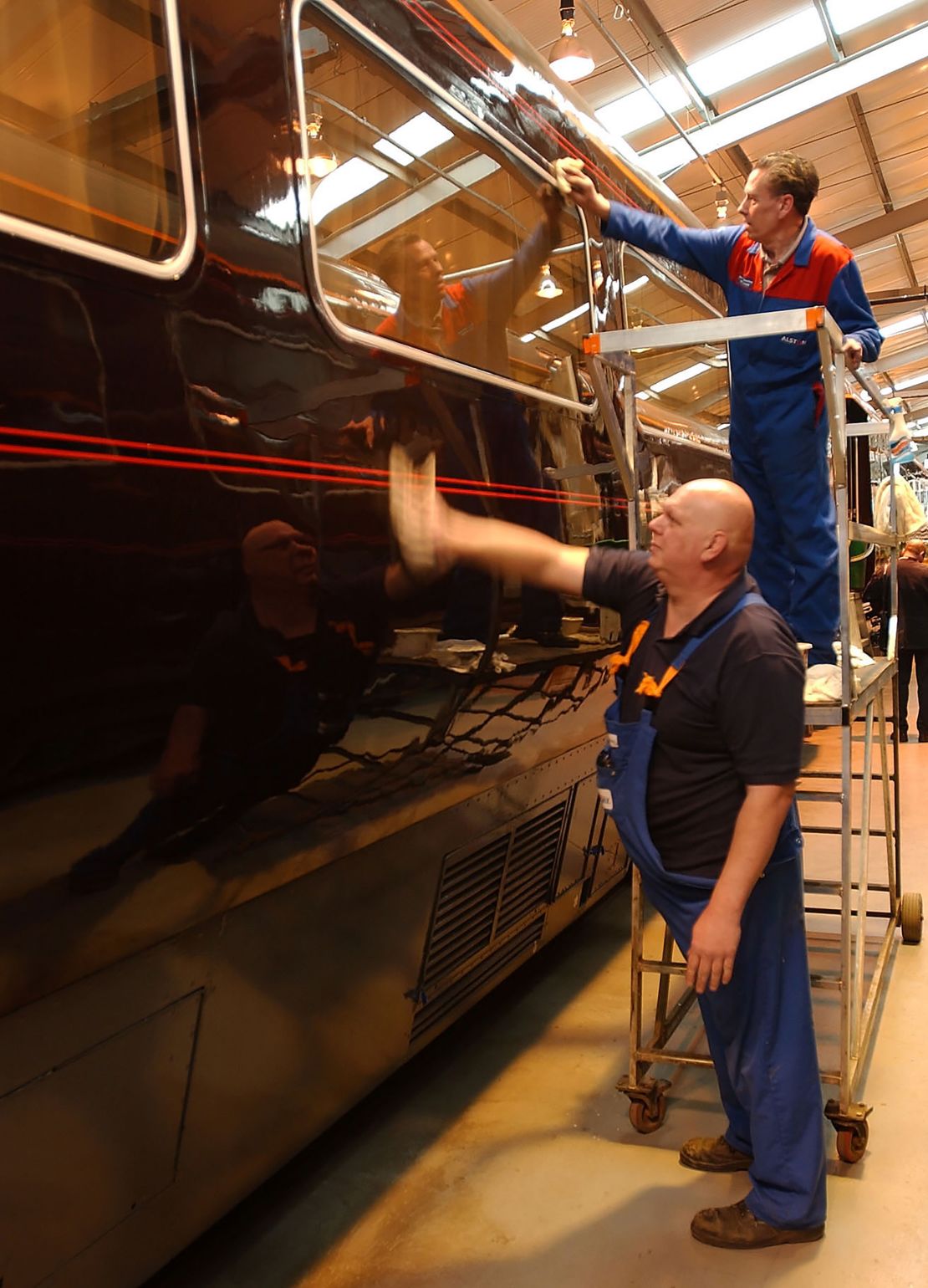Editor’s note: Sign up for Unlocking the World, CNN Travel’s weekly newsletter. Get news about destinations, plus the latest in aviation, food and drink, and where to stay.
CNN
—
In the early 1840s, Queen Victoria became the first British monarch to travel by train in her own dedicated royal saloons, but more than 180 years later, King Charles III looks set to oversee an end to this noble tradition.
The current British royal train, decked out in its rich claret livery, will be decommissioned by March 2027 to “secure best value for public money,” according to the Royal Household’s latest financial report. Instead, senior royals will make greater use of helicopters and scheduled trains for official visits around the country and to travel between their residences in England and Scotland.
James Chalmers, Keeper of the Privy Purse — the ancient title of the individual responsible for royal finances — said the decision to stop the royal train would mean “the fondest of farewells,” but added, “In moving forwards we must not be bound by the past.”
He noted: “The royal train, of course, has been part of national life for many decades, loved and cared for by all those involved.”
Nowhere will that loss be felt more keenly than in the world’s first railway town, Wolverton in Buckinghamshire, where royal trains have been lovingly housed and maintained since the very first vehicle in 1842.
‘A sense of occasion’

“Everybody in Wolverton knows someone who has worked on the royal train and they’re bloody proud of it,” says Philip Marsh, senior railway manager, historian and author of “The Full Works,” a book about the town and its royal train connections.
“This is incredibly sad news,” said Andrea Rossi, chief executive of DB Cargo UK, which has managed the train on behalf of the British government for 30 years. “Not just for DB Cargo UK… but for the broader railway family too.
“There is always a great sense of occasion when the royal train is out on the network. Our drivers take great pride in being asked to take the controls of what is arguably the most prestigious train in the UK and a piece of our national heritage.”
Unlike the sumptuous velvet and gold-lined royal carriages of the 19th century, the current British royal train is surprisingly spartan and practical on the inside — more 1970s business hotel than palace-on-wheels. Its fixtures and fittings have grown outdated and while it still offers secure accommodation for official trips, its use has dwindled notably in recent years.
Retirement was considered once before in 1997, but it was extensively used during Queen Elizabeth II’s Golden and Diamond Jubilee celebrations in 2002 and 2012, touring the country and witnessed by large crowds of wellwishers. It saw action in December 2020, when the Duke and Duchess of Cambridge — Prince William and his wife Kate, now the Prince and Princess of Wales — took a 1,2500-mile tour of Britain by train to thank key workers for their efforts during the Covid-19 pandemic.
Steam and ceremony

Over the last two decades it has even been paired with beautifully restored steam locomotives such as the world-famous Flying Scotsman and Duchess of Sutherland, adding an extra layer of pomp and circumstance to the occasion.
Following the Queen’s death in September 2022, it was expected to transport her coffin from Scotland to London but was sidelined due to concerns about security along the route.
Built in the 1970s, the current royal train is approaching the end of its life. Refurbishing the collection of heavily modified and tailor-made vehicles to modern standards would likely cost tens of millions of dollars. Procuring replacement vehicles to bespoke designs would be even more expensive — particularly as state funding for the Royal Family has increased to cover the $500-million refurbishment of Buckingham Palace.

Some have expressed surprise and sadness that King Charles, known for his environmental advocacy, has chosen to scrap the train in favour of less sustainable options like helicopters. The announcement’s timing, just weeks before Britain celebrates the 200th anniversary of public rail travel, has also drawn criticism.
But the numbers don’t look good.
In 2024-25, the royal train made just two trips, costing over $105,000, according to the Royal Household’s annual financial summary. That compares with 55 private charter flights costing almost $819,000, 141 helicopter trips averaging $4,600 each, and scheduled flights totaling $172,000. Royal travel overall cost $6.4 million last year, up $682,000 from the year before.
End of an era

Britain’s royals aren’t alone in letting their trains go. Over the last 25 years, monarchies in Japan, Sweden and the Netherlands have retired theirs too. Only Denmark and Norway retain dedicated royal saloons, although they are seldom used.
The first carriage built exclusively for use by a British royal was constructed at Wolverton Works by the London & Birmingham Railway for Queen Adelaide, the widow of King William IV, in 1842. For 25 years, Queen Victoria travelled in converted carriages until a bespoke vehicle was commissioned in 1869. British rail companies soon competed to provide ever more luxurious carriages for Victoria and her family, who regarded touring the country as part of their duties.
By 1897, for Victoria’s Diamond Jubilee, the Great Western Railway had built a complete train of six vehicles. Over the years, royal trains pioneered innovations such as onboard toilets, electric lighting, radios, telephones, bathtubs, bedrooms, air conditioning and luxury furnishings.
“Innovations on royal trains have filtered through to ordinary passenger trains in the same way that Formula 1 technology has cascaded down to our cars,” says Marsh, the rail historian. “It’s the safest form of travel and it allows the ‘principals’ to relax, attend briefings on the move and arrive rested at engagements after travelling overnight.”
After World War II, the nationalized British Railways inherited a large collection of royal vehicles, including armor-plated saloons. These were used until Queen Elizabeth II’s Silver Jubilee in 1977, when the current train was assembled.
The royal train is expected to make a final farewell tour of Britain before its 2027 retirement, offering rail fans and royal watchers a last chance to see it pass. Its future remains uncertain, but the survival rate of royal train vehicles is, with many residing in museums such as Britain’s National Railway Museum in York.
“I would not like to see them scrapped,” concludes Marsh. “I’d like to see them displayed in a registered museum, whether that be the NRM or a new museum at their home in Wolverton.”




